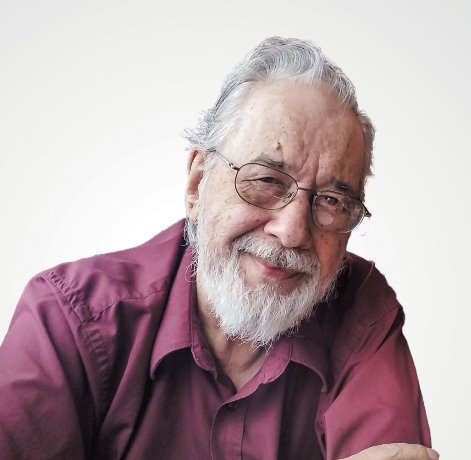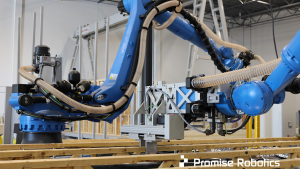Bricklaying robots aren’t new.
They’ve been around in one form or another for almost a decade now. But all of them required a qualified bricklayer working alongside to do the trowelling and to feed bricks one at a time to a robotic arm.
Now, from Australia, comes news of a fully automated bricklaying robot which is capable of quite a few tasks on its own.
It is named for the Roman emperor Hadrian, who, in the year 122 A.D., ordered construction of what became known as Hadrian’s Wall along the northern border of the Roman state of Britannia. It was a defence against the warlike Picts who populated much of what is now Scotland. Many parts of the wall still exist, and a hiking trail follows the wall from the Irish Sea to the North Sea.
An engineer named Mark Pivac, of Perth in Western Australia, is the man behind the invention. He had been working with computer-controlled machinery, and fully recognized its shortcomings. He was also made aware of a shortage of bricklayers in Perth.
In Canada, the construction labour force is growing older year by year. The veterans retire, but there aren’t enough young people qualifying in the skilled trades, so the industry might be interested in Hadrian, which can lay all the brick for a bungalow in just two days.
Technology might be the answer to the shortage of skilled trades. If it isn’t, is won’t be for want of trying.
"People have been laying bricks for about 6,000 years, and ever since the industrial revolution they have tried to automate the bricklaying process," Pivac says. So his Hadrian robot and his company, Fastbrick Robotics, stepped up.
Hadrian makes use of three-dimensional computer-aided design (CAD) systems.
First, the software lays out a house or other structure. The location of every brick is calculated. Then Hadrian figures out how each brick needs to be positioned. It even cuts bricks, when necessary.
Early bricklaying robots had to be moved along and up a wall as course after course was placed. But Hadrian doesn’t move its base once it starts working. Instead, it has a 20-metre articulated telescopic boom which allows it to reach over and around the structures it is building. Mortar is delivered under pressure to the head of the boom.
The boom auto-corrects itself 1,000 times a second to prevent interference from vibrations or sway.
Hadrian has a cultural bias working in its favour. In Australia, I’m told, bungalows are the predominant form of single-family housing, not the two-storey houses that dominate the North American market.
This means that Hadrian doesn’t have to tackle the trickier process of building a two-storey building.
Pivac says Hadrian reduces construction time of a standard bungalow by about six weeks. And, he adds, "due to the high level of accuracy we achieve, most other components, like kitchens and bathrooms and roof trusses can be manufactured in parallel and simply fitted as soon as the bricklaying is completed."
Hadrian can work 24 hours a day, 365 days a year. It can lay 1,000 bricks an hour. It has the potential to erect 150 homes a year. Figures like those cause some people to fear that robots will one day take jobs from human workers, but Pivac hopes Hadrian will create them.
The machine will fill the void that exists due to shrinking numbers of available bricklayers, whose average age is now nearly 50 in Australia.
"(Hadrian) should attract young people back to bricklaying, as robotics is seen as an attractive technology."
The prototype of Hadrian is mounted on an excavator, but when the machine is ready for the market, it will be mounted on a truck.
The project has received about $7 million (Australian) in research and development funding. Commercialization will begin in Western Australia later this year, then nationally, then globally.
Korky Koroluk is an Ottawa-based freelance writer. Send comments to editor@dailycommercialnews.com.




Recent Comments
comments for this post are closed